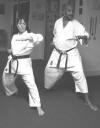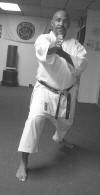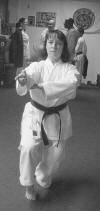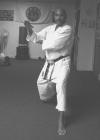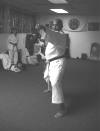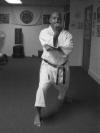MARTIALFORCE.COM
PRESENTS
AN INTERVIEW WITH
SENSEI JOSE JORDAN

By Shihan William Rivera
Edited by: Lydia Alicea
MartialForce.com
Online Martial arts Magazine
Shotokan Karate, founded by Gichin Funakoshi, is a style rich in heritage. Practical and efficient, Shotokan combines tradition with the scientific aspects of kinesiology, physics, anatomy, psychology and biomechanics.
Adhering to the principles and based on the techniques taught by Master Funakoshi, Shotokan Karate is practiced by millions in almost every country around the world. Avoiding stagnation, Shotokan builds upon a development of a strong foundation making it applicable to current times.
Entering the dojo of Jose Jordan Sensei located in Queens, New York is like entering a time tunnel. Tying the feeling of the past while maintaining its footing in the present, Jordan Sensei’s Dojo is a portal into the world of Shotokan.
A sign outside his storefront dojo asks you to remove your shoes before stepping in. While doing so, my partner stated, “I felt like I was entering a warrior’s home.” The air inside carried a fragrance of peacefulness, his medals, awards, and photos adorn the walls, and convey a sense of power and pride.
Yes, you have entered the world of Jordan Sensei a Yodan (4th degree black belt) instructor is considered one of the leading martial arts practitioners and instructors on the East Coast. There are no qualms in this dojo. The style is Shotokan. It is definitely, hard-core. Combining a calm attitude without the harshness associated with militaristic training, Jordan Sensei leads his classes in a strict and disciplined manner.
Jordan Sensei, born in 1954, grew up in Williamsburg, Brooklyn. He has been a student of Shotokan since the age of 14. He joined the famed “Tong Dojo” where his instructors were Master George Cofield (recognized as one of the most outstanding instructors in NYC), and Master Thomas LaPuppet (Black Belt Hall of Fame).
The folMartialforce.com: What system of Martial Arts do you practice and teach. Why did you choose this system?
JOSE JORDAN: “The style is Shotokan. At the age of 14, I came upon a flyer showing a Karateka wearing a gi with a patch “TONGS DOJO”. I was taken by the patch, and wanted to find out what this style of karate was all about. I decided to visit the dojo located in Brooklyn New York. As I watched the class, it took hold of my attention like nothing ever had before! I found the moves simple, yet forceful. Once I saw it, that was it, I knew I wanted that patch and what went with it.”
Martialforce.com: Have you ever cross-trained in any other sports or martial arts system?
JOSE JORDAN: “Yes. I have boxed and practiced Vee-Jitsu Ryu before I encountered Shotokan.
Martialforce.com: Please discuss your training, and who were your instructors at the “Tong Dojo”?
JOSE JORDAN: “My instructors were Grand Master George Cofield and Master Thomas LaPuppet. Each had his own distinct style of teaching. Grand Master Cofield would begin each training session with a 45-minute period, and in that time, he would speak to his students about various topics, insights, or history. They ranged from the martial arts to life in general. Short of labeling it a psyche talk, the effect it had was like a spark, a charge, that would ignite us for the rest of the workout, creating a powerful momentum.
Having served in the US Marine Corps, Master Thomas LaPuppet’s sessions were more militaristic in manner. He would bring you to point where you thought you could not go any further. With a strong rhythm in his voice, and a leadership attitude that commanded following, he would then take you to an even higher level.
The common denominator between Grand Master Cofield and Master LaPuppet was their adherence to technique, body mechanics, and focus.”
Martialforce.com: I know you have competed in tournaments. What motivated you to compete and can you tell us about your competitive career?
JOSE JORDAN: “I have always been competitive and wanting to test my techniques. I started as a green belt competing in brown belt divisions. Master LaPuppet would have me compete in a division higher, and when I attained my brown belt, I competed in black belt divisions.
Master LaPuppet was always concerned about your development as a complete martial artist. Tournaments on green and brown belt levels were used to enhance your development, hone in on your skills, and extend your skills to a greater level. Upon receiving my black belt in 1973, I continued competing in open as well as USKA tournaments throughout the country.
In 1980, I was a member of the USA team coached by Chuck Merriman, which competed in Spain (members which included Billy Banks, Tokey Hill, Alberto Pena, Terry Pritchard, and others). As a member of the USA team, I have competed throughout the world. I also competed in the NKL (National Karate League) in the mid 1970’s as a member of the NY Puppets.”
Martialforce.com: How has your own training changed in the past twenty years?
JOSE JORDAN: “The more I practice my Shotokan and learn, the more my training stays the same. My practice of kihon (basic techniques, foundation) continues to be the highlight of my training. The practice of kihon enhances my kata and kumite to the point where it makes my Shotokan even stronger. The practice of Shotokan is inherent in the idea than less is more. It is better to know one technique very well and apply it to many situations, then to know many and only be able to apply to a few.”
Martialforce.com: Have you changed the way in which you train your students?
JOSE JORDAN: “ The variety of drills available to my students, has allowed me to maintain the way in which I teach throughout the years. This allows the work-outs to remain interesting while keeping the essence of the art, traditional and hard-core.”
Martialforce.com: What are your thoughts on kata training, and do you feel it is needed?
JOSE JORDAN: “ I consider kata to be an essential part of Shotokan. Like in language, it is the alphabet to the style. Though kata is a major component, like kumite and kihon, it is part of the whole. This is what makes Shotokan one of the most powerful martial arts in the world.”
Martialforce.com: Where is your dojo located?
JOSE JORDAN: “The is located in Queens, NY. Its name is, “Traditional Shotokan Karate”, 7816 101 Ave, Ozone Park, NY 11416.” (718) 835-7833.”
Some last thoughts from our interview:
“The training in Jordan Sensei’s Dojo is carried out in a meticulous manner. Calisthenics are performed as a supplement to the training before or after the class. When Jordan Sensei starts his class, Kihon, Kata, and Kumite in the Shotokan style, is what you will receive. Jordan Sensei exudes power and confidence and he successfully develops these strengths in his students, not just for in the dojo, in their lives as well. The students of Jordan Sensei compete in tournaments throughout the East Coast as well as on a national level. His students have placed either 1rst or 2nd in the tournaments.”
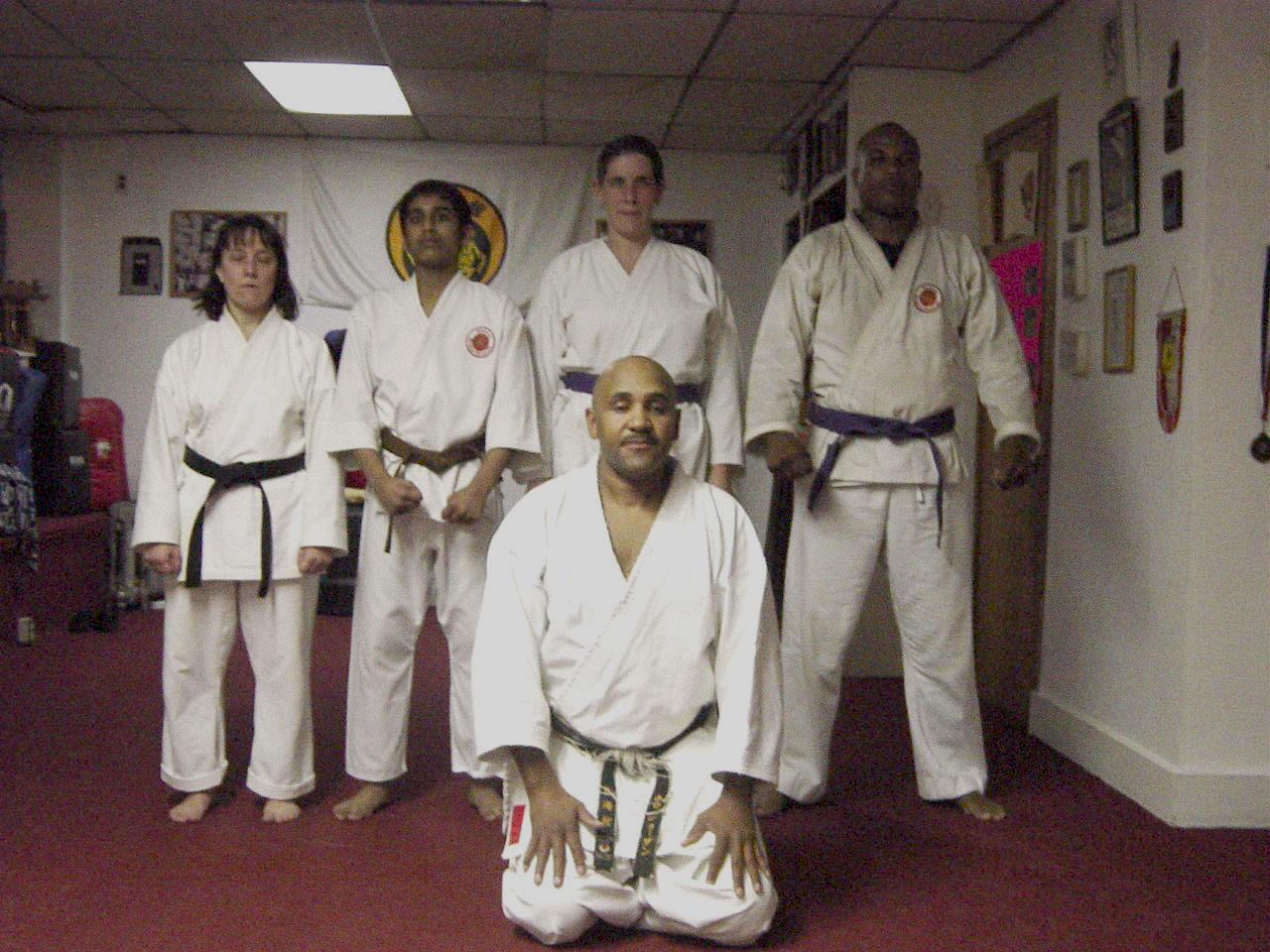

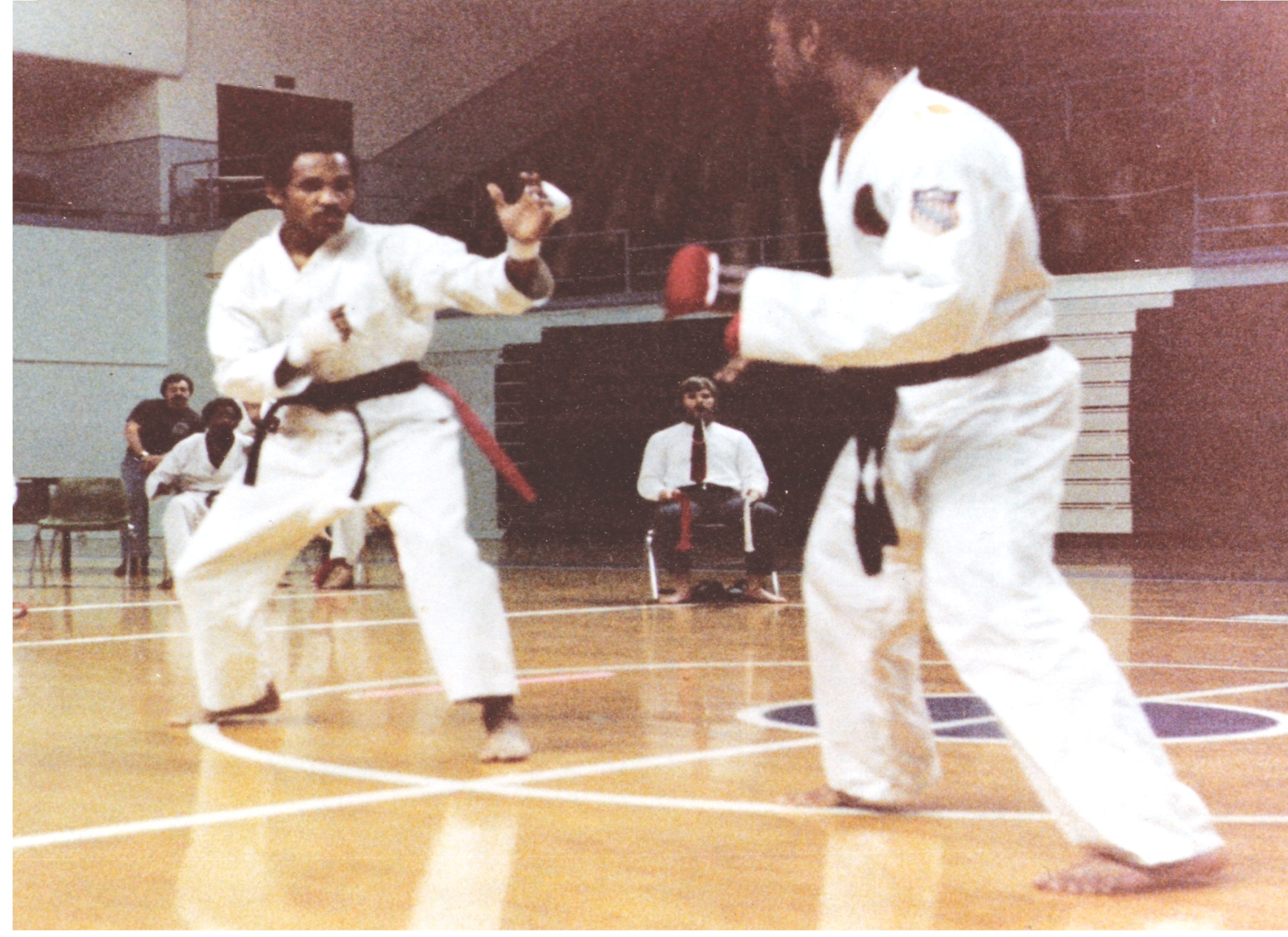
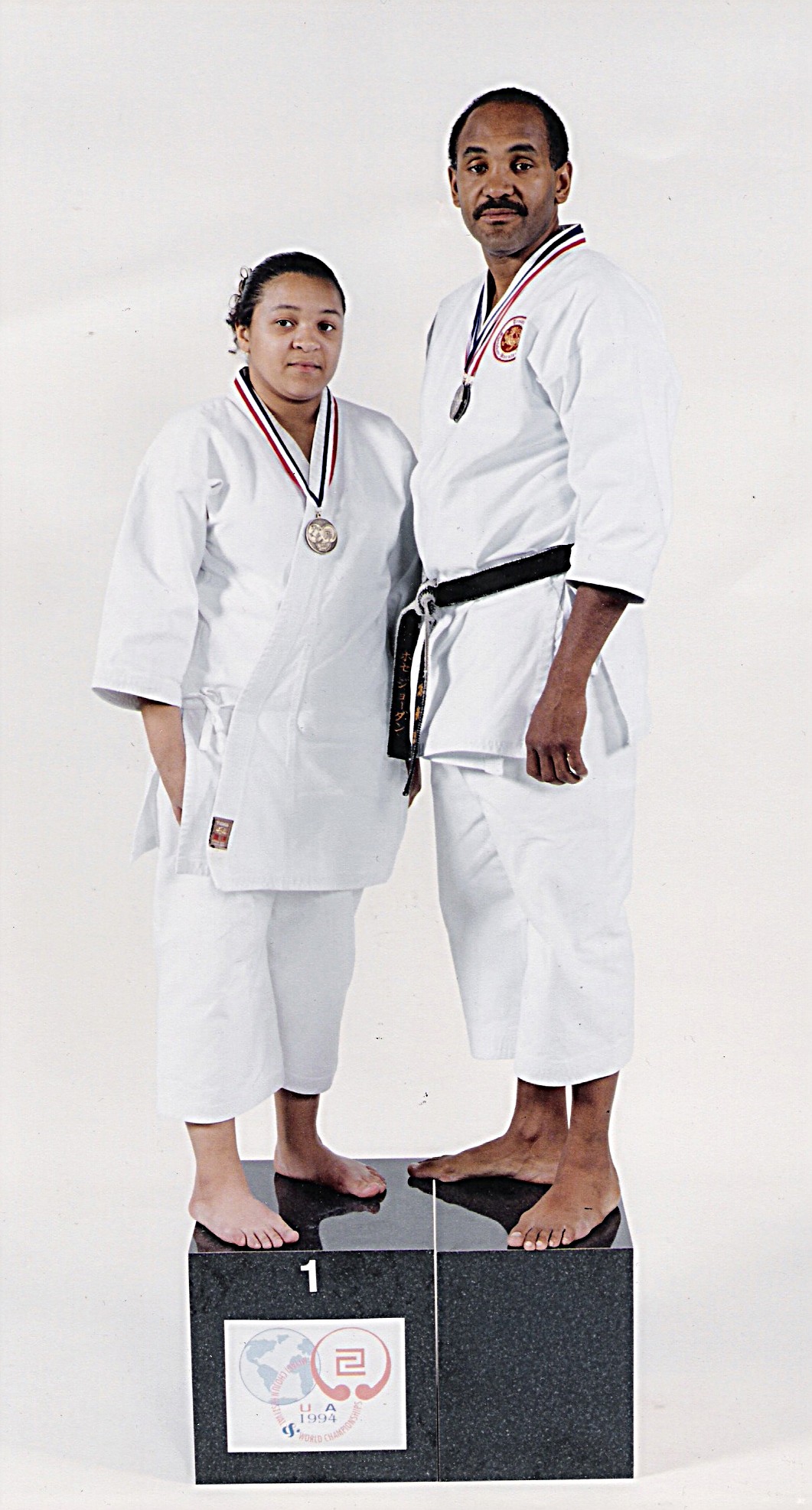
DAUGHTER AND FATHER
